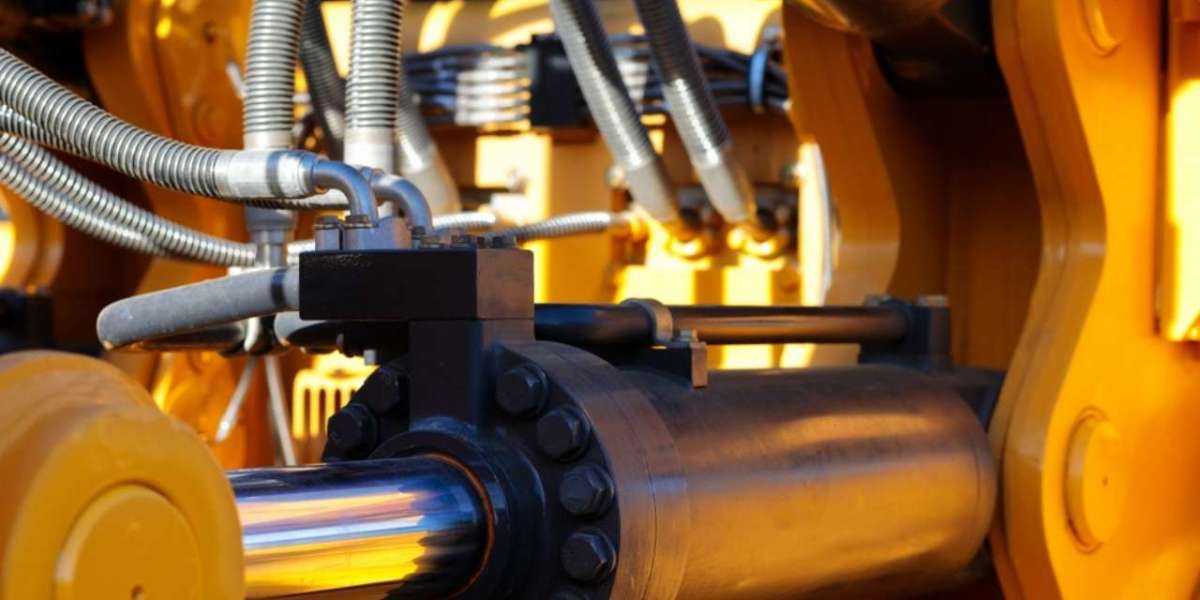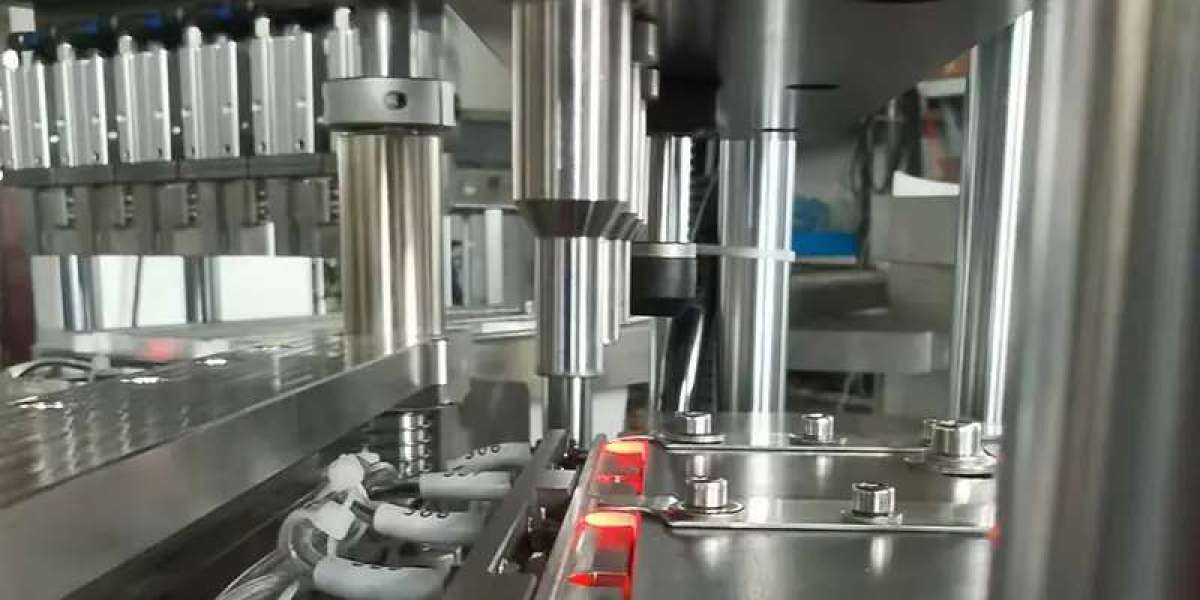In a world of evolving automation, intelligent machinery, and dynamic mobile systems, precision is not just a nice-to-have—it’s a necessity. From automated mining equipment to construction robotics, modern hydraulics no longer operate on assumptions or manual adjustments. They demand accuracy. They require feedback.
Enter the inductive linear position sensor—a compact, powerful tool that transforms how hydraulic systems measure, control, and execute movement. Whether you're using servo motor hydraulic pumps, rotary actuators, or load sensing proportional valves, these sensors bring data-driven control into the hydraulic equation.
In this comprehensive guide, you’ll explore how inductive linear position sensors support and enhance mobile and industrial hydraulic systems, and how they contribute to smarter, safer, and more efficient machine performance.
Chapter 1: What Is an Inductive Linear Position Sensor?
An inductive linear position sensor measures the exact position of a moving object, typically the rod of a hydraulic cylinder, without making contact. It uses electromagnetic induction to detect the proximity of a conductive target.
Key Characteristics:
Non-contact measurement
High durability in harsh environments
Absolute position feedback
Immune to contamination and mechanical wear
Unlike potentiometers or resistive sensors, inductive types offer long-term reliability and are ideal for mobile hydraulic services and rugged outdoor applications.
Chapter 2: Linear Position Sensors in Hydraulic Cylinders
Most commonly, inductive sensors are installed within or alongside hydraulic cylinders to provide continuous position feedback.
This feedback is critical for:
Controlling servo motor hydraulic pumps
Managing actuator position in automated mobile equipment
Balancing braking force in a load sensing proportioning valve brake system
Providing intelligent input to hydraulic power packs
Hydraulic service professionals often retrofit existing systems with linear position sensors for hydraulic cylinders to enable automated feedback control or improve safety compliance.
Chapter 3: From Manual to Smart – The Shift Toward Sensorized Hydraulics
Historically, hydraulics operated blindly. Valves opened, fluid flowed, and cylinders moved—often controlled by basic pressure switches or manual levers. But as machinery became more sophisticated, remote, and autonomous, sensors became indispensable.
Inductive linear position sensors enable:
Closed-loop control with real-time feedback
Precise valve positioning
Load compensation and balancing
Adaptive control of servo motors and actuators
Reduced downtime via predictive diagnostics
This technology plays a pivotal role in evolving hydraulic systems for mobile equipment, especially in off-highway, military, and agricultural automation.
Chapter 4: Integrating Sensors with Hydraulic Power Packs
Modern hydraulic power packs for sale often include interfaces for sensors. This allows them to:
Adjust pump displacement in real time
Regulate actuator position using servo motor hydraulic pumps
Monitor system dynamics for failure detection
Paired with a servo motor drive, an inductive sensor allows the system to match actuator movement to fluid pressure, enhancing energy efficiency and safety.
Internal gear pumps, known for their stable flow, work particularly well with sensor-based systems because they support consistent feedback loops.
Chapter 5: Supporting Smart Braking Systems – Load Sensing and Sensors
One standout application of inductive sensors is in the load sensing proportioning valve brake system.
This system adjusts brake force based on load position. The sensor feeds back real-time data on suspension compression or vehicle weight distribution, which is then used to:
Calibrate load sensing proportional valves
Prevent skidding or lock-ups
Reduce wear on brake pads and actuators
Improve control under dynamic load shifts
Mobile hydraulic services frequently install and calibrate these systems in utility trailers, military vehicles, and mining trucks.
Chapter 6: The Role of Inductive Sensors in Flow Control and Valve Systems
Hydraulic flow control valves manage the rate at which fluid is allowed through a system. Without position feedback, these valves operate on assumptions or preset limits.
By integrating inductive linear sensors, systems can:
Measure valve position with high accuracy
Ensure smooth acceleration and deceleration of actuators
Prevent pressure spikes or surges
Enable coordinated multi-actuator control
In combination with load sensing proportional valves, inductive sensors allow hydraulic systems to adapt dynamically to load changes, significantly boosting efficiency.
Chapter 7: Compact Power, Big Intelligence – Small Servo Motors and Sensor Feedback
In space-constrained applications like robotic arms, mobile lifts, or autonomous platforms, small servo motors provide the precise torque needed to drive hydraulic pumps or valves.
When paired with inductive linear position sensors, these motors become part of a closed-loop motion control system that adjusts:
Speed
Torque
Direction
Displacement
Even though servo motor price can be higher than standard motors, their integration with smart sensors yields substantial ROI by reducing fluid waste, increasing actuator longevity, and improving safety.
Chapter 8: Sensors in Mobile Hydraulic Services and Field Repairs
On-site services now rely heavily on sensor diagnostics. When mobile hydraulic teams respond to a malfunction, one of their key tools is the sensor readout.
Mobile services use sensors to:
Check for misalignment in cylinders
Test actuator position against control signals
Diagnose failing valves or pumps
Tune servo-driven systems
In many cases, adding an inductive linear position sensor during hydraulic cylinder repair allows legacy systems to be upgraded to semi-autonomous operation.
Chapter 9: Enhancing Rotary Actuator Control with Position Sensors
While rotary actuators provide angular motion in compact packages, without sensors, their control is limited.
Inductive sensors installed at the actuator shaft or housing can:
Measure rotation angle
Detect end-of-travel limits
Trigger brake or valve response
Enable synchronized motion across actuators
This is particularly valuable in applications like excavator booms, robotic grippers, or agricultural sprayers, where angular precision is essential.
Chapter 10: Matching Motors and Pumps – Choosing the Right Pairings
The best hydraulic systems combine:
Hydraulic motors for sale suited to your torque and RPM needs
Servo motor hydraulic pumps with smart feedback
Inductive sensors to complete the loop
Whether you're running a mining drill, a portside crane, or an autonomous loader, mobile hydraulic services can assess your setup and recommend:
Ideal internal gear pumps for flow consistency
Compact power packs with sensor ports
Field-ready valve and motor replacements
Chapter 11: Retrofitting Older Systems with Inductive Sensors
You don’t need to rebuild a system from scratch to gain smart capabilities.
Retrofitting existing hydraulic cylinders, valves, or actuators with inductive linear position sensors is both cost-effective and transformative.
Steps typically include:
Cylinder inspection and cleaning
Rod machining or sensor bracket installation
Sensor alignment and housing
Integration into the control system
Calibration and testing
Whether you're maintaining a legacy fleet or upgrading factory automation lines, sensor retrofitting can extend system life while introducing advanced control.
Chapter 12: Industry Applications and Future-Ready Designs
Inductive linear position sensors are found across sectors:
Agriculture: Combine harvester arm positioning, sprayer boom leveling
Construction: Loader arm angle sensing, jack height control
Defense: Vehicle suspension feedback, turret rotation
Energy: Drilling equipment stroke measurement
Automation: Robotic welding arms, automated assembly lines
The sensors are often integrated alongside hydraulic cylinder seals, servo drives, and smart flow valves in a modular, networked configuration.
Looking forward, data logging, cloud monitoring, and machine learning will further enhance how sensors interact with other hydraulic components—turning reactive machines into predictive systems.
Conclusion: Why Inductive Linear Position Sensors Are a Hydraulic Game-Changer
In today’s high-performance hydraulic landscape, components alone aren’t enough. It's how they communicate and respond that defines their value.
Inductive linear position sensors offer a simple yet powerful solution to bridge the gap between mechanical action and electronic intelligence. Whether you're running a compact hydraulic power pack, managing a servo motor hydraulic pump, or retrofitting a load sensing valve, sensors provide the essential insight your system needs to perform better, longer, and smarter.
At THM Huade, we recognize that the future of hydraulic engineering is one where feedback drives function. And inductive linear position sensors are leading that revolution—quietly, accurately, and reliably.
FAQs – Inductive Linear Position Sensors
Q1: What is the difference between inductive and resistive linear position sensors?
Inductive sensors use electromagnetic fields to detect position, offering longer life and resistance to contamination. Resistive sensors wear over time and are less durable in harsh environments.
Q2: Can linear position sensors be retrofitted into existing cylinders?
Yes, mobile hydraulic services often retrofit inductive sensors into standard cylinders to enable feedback-based control.
Q3: How do these sensors improve hydraulic system performance?
They enable real-time position feedback, which is used to control valves, pumps, and actuators more accurately—reducing energy waste and improving motion control.
Q4: Are sensors compatible with small servo motors and power packs?
Yes, inductive sensors integrate well with both compact servo motors and hydraulic power packs, enabling efficient closed-loop operation.
Q5: What is the role of inductive sensors in braking systems?
In load-sensing brake systems, sensors measure load position or suspension deflection, allowing the brake force to adjust dynamically for safer stops.
Q6: What kind of maintenance do these sensors require?
Very little. They are non-contact and sealed, requiring minimal intervention beyond periodic alignment checks and electrical testing.
Q7: Can these sensors detect angular rotation?
Not directly. For rotation, angular inductive sensors or encoders are used. However, they can be applied in tandem with rotary actuators to monitor motion indirectly.
Q8: Do inductive sensors help with hydraulic cylinder repair?
Yes, they often reveal misalignment, wear, or performance issues during diagnostics, making repair and calibration more effective.













